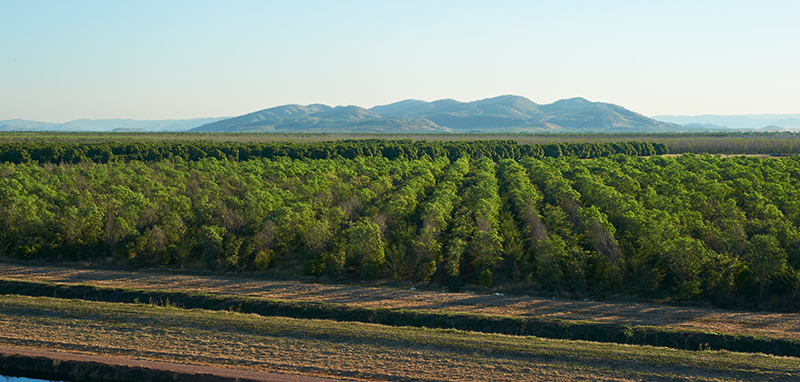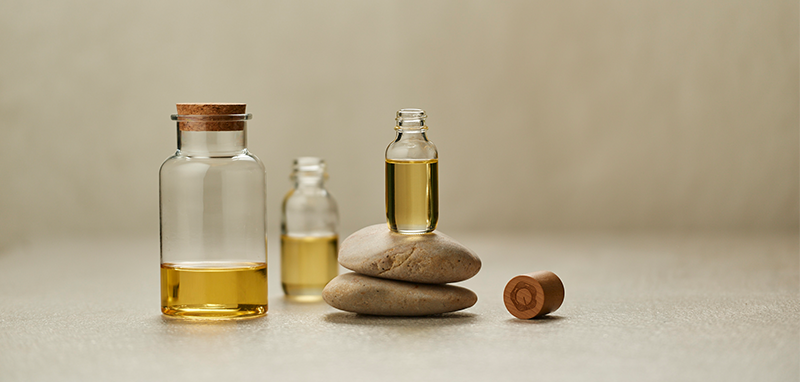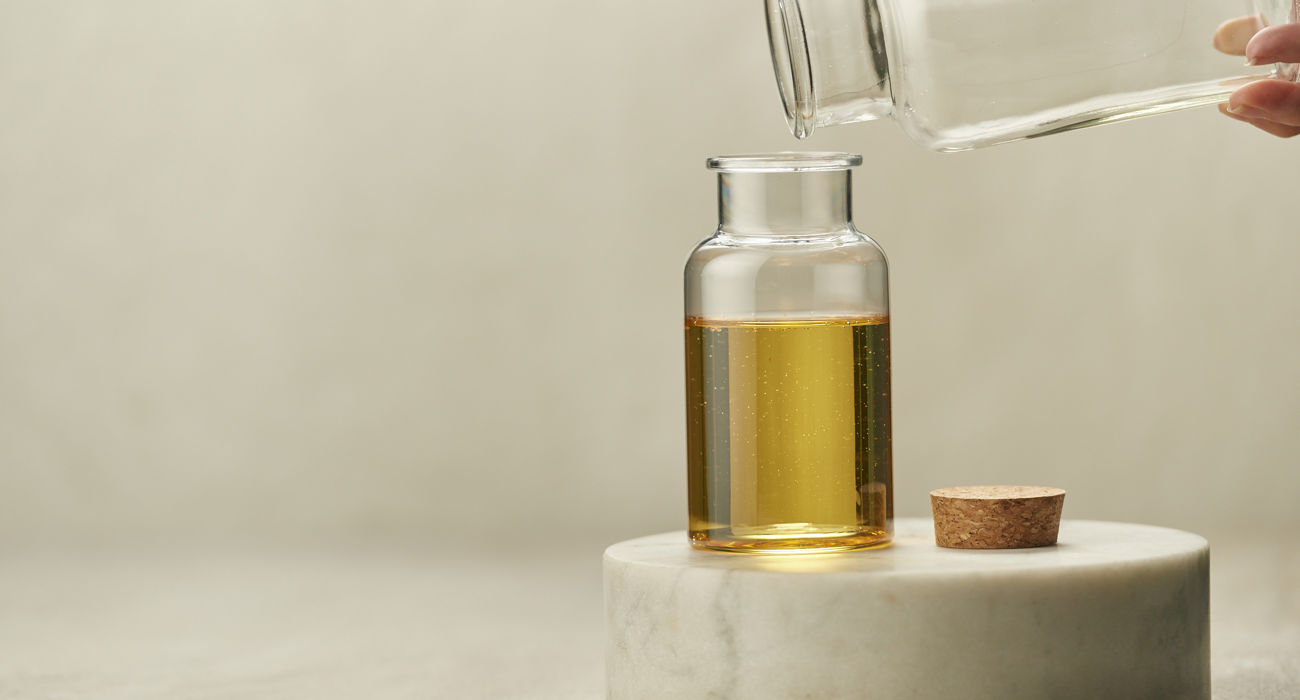WRITTEN BY DENIZ ATAMAN,
INDEPENDENT JOURNALIST
Historically, Indian sandalwood’s significance dates back as far as the 5th century. Originating in India, its uses went hand in hand with perfumery and Ayurvedic practices, moving to China as a warming ingredient for Traditional Chinese Medicine remedies; and finally dispersing to the rest of the world through the Silk Route, bringing a unique and diverse meaning for each region and culture that continues today. A precious ingredient for diverse applications like flavour, fragrance, cosmetics, aromatherapy and pharmaceuticals, coupled with limited supply sourced from the wild and steep prices, sandalwood oil is at continued risk of adulteration and contamination.
Born out of a desire to ensure the highest quality source of ethical and traceable sandalwood in Australia, Quintis is an advocate for sustainable, traceable and ethical Indian and Australian sandalwood for the wide range of industries it serves. From seed to oil, Quintis produces 100% pure sandalwood devoid of fillers and additives to give formulations the full benefit of the oil’s proven multifaceted properties. Here we look at several significant factors that contribute to substitutes and key components to identify its authenticity.

The Current State of Adulteration
Approximately 80% of essential oils on the market are adulterated.1 A gross estimation, nonetheless, particularly as the demand for oils continues to rise in a post-pandemic era as the aromatherapy and fragrance industries saw record sales. Adulteration, unfortunately, is a common practice in the essential oil business due to stiff competition and limited supply of high-quality oils, especially those sourced from the wild. Indian sandalwood in particular, is a globally recognised ingredient with an exceptionally high demand and subject to price spikes and cheaper substitutions. As a botanical ingredient, oils may differ due to time, the condition of harvest and environmental fluctuations like drought or flooding, giving unethical companies an opportunity to add additional components to reduce an oil’s quality.
A lack of traceability creates a more muddled outlook of provenance and production methods which unfortunately results in an estimated 90% of Indian sandalwood being illegally harvested and adulterated.1 As a vertically integrated business, Quintis’ processes demonstrate full traceability from sandalwood seed to oil across the entire plantation estate. Sustainable plantation management creates a reliable supply for decades to come, particularly in a market where supply reliability is an ongoing issue we face as an industry. Why is this important? When customers trace an oil back to a harvest area, each process in the harvest and production is accounted for indicating that each batch is consistent, pure, devoid of fillers, colourants and other adulterants.
It’s also important to note the distinction between adulteration and intentional rectification.2 As essential oils are a natural substance from a botanical, many are subject to rectification to remove allergens, irritants and other toxic components. For example, most citrus oils contain the furocoumarin, bergapten, which can cause phototoxic reactions like burning, blistering, atopic dermatitis and hyperpigmentation. With pure sandalwood, however, there is no need for intentional rectification. As per the IFRA and the European Commission guidelines, sandalwood contains low known allergens, meaning its purity is safe for flavour, fragrance, cosmetic and pharmaceutical applications.

The Multifaceted Benefits of Indian Sandalwood Oil
A highly sought-after perfumery ingredient, Indian sandalwood is known for its complex notes—an intermix of woody and lactonic facets—that creates longevity and versatility in a fragrance formulation and grounds any type of accord. An active wellness ingredient, sandalwood possesses five key properties as an anti-oxidant, anti-inflammatory, anti-microbial, anti-proliferative and anti-pigmenting making it an excellent multifunctional cosmetic ingredient. This is due to its high alpha and beta santalol content, which helps alleviates skin conditions like acne, psoriasis and eczema, while blocking free radicals that can lead to oxidative stress within the skin barrier.
In aromatherapy, sandalwood oil’s high alpha and beta-santalol content offers wellness benefits that relax the central nervous system and inhibit the brain’s delta opioid receptors, areas that are linked to depressive disorders. Massage therapy also complements aromatherapy, as alpha-santalol soothes skin, improves circulation and reduces swelling. Even as an ingested ingredient, particularly in Ayurvedic medicine, sandalwood oil is used for treating digestive problems.3 Aside from its incomparable scent, sandalwood’s active medicinal properties are another reason to encourage customers to pursue a pure oil.

Types of Adulterants in Sandalwood Oil
It’s safe to say that sandalwood oil has been imitated many times but never replicated. As mentioned earlier, Indian sandalwood oil’s alpha and beta santalol, along with over 125 different chemical compounds are responsible for its distinct benefits. Pure Indian sandalwood contains between 60 to 80% of total santalols.
Substitution is a common way for suppliers to blend pure oil with an incorrect plant species like osyris wood from Africa and other Santalum species. Many consumers often confuse sandalwood with essential oil of amyris, Buddha wood, cedarwood and other woody essential oils which exhibit a similar constituency and scent; while haldu, boxwood, gardenia and kalm are unscented and exhibit a similar appearance.4 Common adulterants include carrier oils (castor, coconut) diethyl phthalate and dioctyl phthalate and heavy glycols mixed with synthetic sandalwood analogues.
Synthetics are chemical analogues of beta-santalol, which is responsible for the unique creamy, woody, sweet sandalwood aroma. These synthetic molecules have been around for over five decades and used by perfumers in balancing the uniform aroma of their creations. Although these molecules are safe, they are not considered a natural alternative to the complex nature of Indian sandalwood oil and its multifaceted benefits on skin and brain.
For many essential oils, undeclared marker constituents using fermentation or chemical synthesis, or colorants to mimic the visual aspects, often confound buyers who have limited to no access to a chromatograph and unfortunately come across counterfeit certificates of analysis. Analytical tools are critical in helping identify specific markers like sesquiterpenes in an oil. Although fermentation or chemical synthesis is not possible for Indian sandalwood, it’s important to note that its legitimacy is based on containing between 60-80% of alpha and beta santalol sesquiterpenes,5 indicating its chemical fingerprint through a chromatogram.

Sandalwood Oil Straight from the Source
An ethical and trustworthy oil supplier is the foundation to producing a high-quality product, especially as brands continue to evolve to meet consumer expectations for transparency. This includes transparency in the harvest location, management practices, distillation methods and other qualities that showcase traceability; as well as third-party certifications to validate the purity of an oil.
Sandalwood trees generally take approximately 20-25 years to mature in the wild. On its Australian plantations, Quintis’ resources bring trees to harvestable maturation by 15 years using irrigation systems to supplement rainfall and selecting host trees that supply the sandalwood tree roots with consistent nutrients, while the tropical climate allows for Indian sandalwood to thrive. As a result, this process produces a rich and highly potent oil from the heartwood that’s ready for market with clear traceability, while protecting the species from extinction. So, it’s no surprise that in the wild, this hearty yet coveted plant is declared Vulnerable by the International Union for Conservation of Nature due to overharvesting and poaching around the world.
Quintis holds various certifications, including FSC certification for forest management, Australian Trusted Trader, ISO 1400 Environment, ISO 9001 Quality and AS/NZA 4801 Safety. A 60,000 square metre custom-built distillation facility gently steam distils the heartwood oil, where each batch contains the highest alpha and beta-santalol content, allowing users to experience its full aromatic, therapeutic and traditional medical benefits. Quintis sandalwood oil also complies with ISO3518 and meets British and United States Pharmacopoeia standards, while its logs, wood chips and powder are globally certified.
Although it’s at risk for adulteration, contamination and false authentication, pure Indian sandalwood continues to have a place in a wide range of industries. It’s an industry-wide effort to provide and promote transparent business and harvest practices for all essential oils; as well as a duty to produce pure oils that benefit the wellbeing of a global community.

"Red Flags" to Look Out For When Purchasing Indian Sandalwood Oil
1. Goods significantly below going market rate
2. Cash only or a lower price for goods without paperwork
3. Paperwork invalid or otherwise suspect
4. Unusual sales methods or practices
5. Transactions fit the description of illegal transactions discussed in trade/industry publications
6. The inability of suppliers to provide rational answers to routine questions
References
- Lex Thompson 2013
- https://www.aromaweb.com/articles/essential-oil-adulteration.asp
- https://www.ncbi.nlm.nih.gov/pmc/articles/PMC6536050/
- https://bangaloremirror.indiatimes.com/bangalore/others/whats-that-in-my-sandalwood-oil/articleshow/91526032.cms
- https://www.acs.org/content/acs/en/molecule-of-the-week/archive/s/santalols.html
Suggested Reading
Moy RL, Levenson C. Sandalwood album oil as a botanical therapeutic in dermatology. The Journal of clinical and aesthetic dermatology. 2017;10(10):34.
Robert Pappas, PhD and Prabodh Satyal, PhD, Adulteration Analysis in Essential Oils, 2016. (The International Journal of Professional Holistic Aromatherapy, Volume 5, Issue 2), 33.
